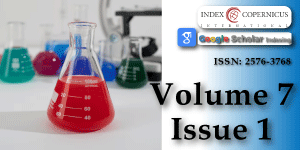Qualitative Identification of Secondary Metabolites and Determination of the Toxicity of Extracts Obtained from the Flower of Kalanchoe Pinnata
Main Article Content
Abstract
Kalanchoe pinnata, also known as air leaf or life leaf, is a plant used in traditional medicine in different world regions. In Mexico, it is included in the Atlas de la Medicina Tradicional Mexicana with a wide variety of applications, such as antimicrobial, anti-inflammatory, anticancer, and antihistamine, among others. However, neither a secondary metabolite profile of the flower has been reported nor information on its possible toxicity. The latter is the purpose of this work. A phytochemical profile of extracts with solvents of different polarity (aqueous, methanol, ethanol, and ether) was carried out. In this profile, the structural compounds could be qualitatively determined by chemical reactions, and some changes in coloring or precipitation were observed. The acute toxicity test of the extracts was performed with an aquatic organism, Artemia sp, and a terrestrial organism Eisenia foetida, as well as the evaluation of the antioxidant capacity of the extracts in the organism of Eisenia foetida. The ABTS radical method and TROLOX were applied as synthetic antioxidants for the evaluation of the inhibition percentage. Most important secondary metabolites were qualitatively identified in the extracts of K. pinnata flowers. Mainly in the alcoholic extracts (methanol and ethanol) tannins, alkaloids, and flavonols were found. As mentioned above, they are reported to have toxicological effects. The toxicity and antioxidant activity tests confirm the preliminary results obtained in the identification of secondary metabolites. It is therefore concluded that the flower of Kalanchoe pinnata contains secondary metabolites that may be of great therapeutic interest.
Article Details
Copyright (c) 2023 Peña DCM, et al.

This work is licensed under a Creative Commons Attribution 4.0 International License.
Tiwari P, Kumar B, Kaur M, Kaur B, Kaur H. Phytochemical screening and Extraction: A Review. Internationale Pharmaceutica Sciencia. 2011; 1: 99-103.
Kolodziejczyk-Czepas J, Stochmal A. Bufadienolides of Kalanchoe species: an overview of chemical structure, biological activity and prospects for pharmacological use. Phytochem Rev. 2017;16(6):1155-1171. doi: 10.1007/s11101-017-9525-1. Epub 2017 Aug 2. PMID: 29200987; PMCID: PMC5696496.
Al- Snafi E. The Chemical Constituents and Pharmacological Effects of Bryophyllum calycinum. A review”. International Journal of Pharma Sciences and Research. 2013; 4: 171-173.
Sharapin N. Fundamentals of Technology of Phytotherapeutic Products. Ibero-American Program of Science and Technology for Development. First edition. 2000; 158-203.
Earthworm, Acute Toxicity Test. OECD Guideline for Testing of Chemicals. No. 207. 1984; 1-7.
González Y, Aportela P. Determination of the Acute Toxicity of Potassium Dichromate in the Larvae of Artemia salina. Center for Toxicology and Biomedicine. 2001; 1(1):104-8. 104-107.
OECD Guideline for Testinf of Chemicals, “Earthworm, Acute Toxicity Tests”, OECD. 1984; 207: 01-08.
Schmidt R. Optical motility test for the detection of trichothecenes using brine shrimps. Mycotoxin Res. 1985 Mar;1(1):25-9. doi: 10.1007/BF03191951. PMID: 23605723.
Törökné A, Vasdinnyei R, Asztalos BM. A rapid microbiotest for the detection of cyanobacterial toxins. Environ Toxicol. 2007 Feb;22(1):64-8. doi: 10.1002/tox.20235. PMID: 17295262.
McLaughlin JL, Lingling LR, Anderson JE. The use of biological assays to evaluate botanicals. Drug Information J. 1998; 32: 513-524.
Meyer BN, Ferrigni NR, Putnam JE, Jacobsen LB, Nichols DE, McLaughlin JL. Brine shrimp: a convenient general bioassay for active plant constituents. Planta Med. 1982 May;45(1):31-4. PMID: 7100305.
Gutierrez D, Ortega W, Oliveira A, Zaldivar C, Mancini-Filho J. Comparison of the antioxidant properties and polyphenol content of aqueous extracts of the marine algae Bryothamnion triquetrum and Halimeda opuntia. Ars Pharmaceutica. 2015; 56(2): 89-99.
Rice-Evans CA, Miller NJ, Paganga G. Structure-antioxidant activity relationships of flavonoids and phenolic acids. Free Radic Biol Med. 1996;20(7):933-56. doi: 10.1016/0891-5849(95)02227-9. Erratum in: Free Radic Biol Med 1996;21(3):417. PMID: 8743980.
Reddy MK, Gupta SK, Jacob MR, Khan SI, Ferreira D. Antioxidant, antimalarial and antimicrobial activities of tannin-rich fractions, ellagitannins and phenolic acids from Punica granatum L. Planta Med. 2007 May;73(5):461-7. doi: 10.1055/s-2007-967167. PMID: 17566148.
Middleton E Jr, Kandaswami C, Theoharides TC. The effects of plant flavonoids on mammalian cells: implications for inflammation, heart disease, and cancer. Pharmacol Rev. 2000 Dec;52(4):673-751. PMID: 11121513.
Ganesan S, Faris AN, Comstock AT, Chattoraj SS, Chattoraj A, Burgess JR, Curtis JL, Martinez FJ, Zick S, Hershenson MB, Sajjan US. Quercetin prevents progression of disease in elastase/LPS-exposed mice by negatively regulating MMP expression. Respir Res. 2010 Sep 28;11(1):131. doi: 10.1186/1465-9921-11-131. PMID: 20920189; PMCID: PMC2954923.
Aziz NH, Farag SE, Mousa LA, Abo-Zaid MA. Comparative antibacterial and antifungal effects of some phenolic compounds. Microbios. 1998;93(374):43-54. PMID: 9670554.
Robles-García MA, Aguilar AJ, Gutiérrez-Lomelí M, Rodríguez-Félix F, Morales-Del-Río JA. Qualitative identification of secondary metabolites and cytotoxicity determination of tempisque extracts (Sideroxylum capiri pittier). Biotecnia. 2016; XVIII(3): 3-8.
Maldoni B. Alkaloids: Isolation and purification. Journal of Chemical Education. 1991; 68(8):700-703.
Waghorn GC, McNabb WC. Consequences of plant phenolic compounds for productivity and health of ruminants. Proc Nutr Soc. 2003 May;62(2):383-92. doi: 10.1079/pns2003245. PMID: 14506885.
Jean-Blain C. Nutritional and toxicological aspects of tannins. Veterinary Medicine Review. 1988; 149 (10): 911-920.
Reed JD. Nutritional toxicology of tannins and related polyphenols in forage legumes. Journal of Animal Science. 1995; 73: 1516–1528, https://doi.org/10.2527/1995.7351516x
Hoste H, Jackson F, Athanasiadou S, Thamsborg SM, Hoskin SO. The effects of tannin-rich plants on parasitic nematodes in ruminants. Trends Parasitol. 2006 Jun;22(6):253-61. doi: 10.1016/j.pt.2006.04.004. Epub 2006 Apr 24. PMID: 16632404.
Bogucka-Kocka A, Zidorn C, Kasprzycka M, Szymczak G, Szewczyk K. Phenolic acid content, antioxidant and cytotoxic activities of four Kalanchoë species. Saudi J Biol Sci. 2018 May;25(4):622-630. doi: 10.1016/j.sjbs.2016.01.037. Epub 2016 Feb 1. PMID: 29740226; PMCID: PMC5936878.

